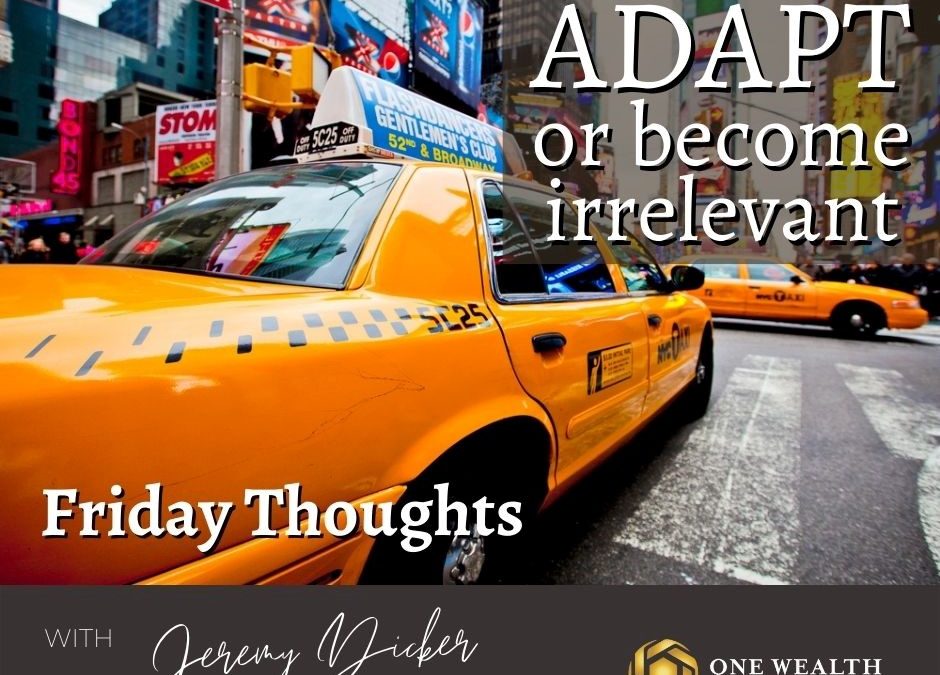 Prior to when Uber and Lyft launched, taxis ruled the roads.
Prior to when Uber and Lyft launched, taxis ruled the roads.
Medallions to operate a taxicab were worth millions of dollars, kept for a lifetime, and then passed down to the younger generation. Taxis controlled transportation, from pick-ups at the airport to dictating the work commute and just about everything in between. Taxis had no real competition.
But the quality of the product? That was average at best (as long as you arrived in one piece).
The customer experience? Well, there really was none to note (unless you happened to sit in gum).
And then…BOOM!
Uber and Lyft arrived, completely changing the transportation game. They became so impactful in our lives that they soon altered traffic patterns, when we went out on the town, how we felt about commuting, and created a whole gig economy for Uber and Lyft drivers.
Taxi drivers were threatened, understandably. They’d be doing things the same way without accountability for almost a century. Those prized medallions were suddenly worth a fraction of their former value. An industry changed forever.
Today, taxis are back, forced to adapt. Uber and Lyft have experienced their own set of challenges. Both have found a way to co-exist, settling into their unique niches and value propositions.
This week, I traveled to New York for the first time in three years.
As I walked out of the terminal at JFK airport, I went to open my Uber app and request a ride. However, I happened to look up, saw a taxi stand in front of me, and decided that I would take a cab instead. I haven’t jumped in the back of a cab for some time, so why not, I thought. (Not to mention, there’s no more quintessential taxi city than Manhattan!)
I approached the taxi that was waiting by the curb and told him where I was headed.
To which the driver replied, “It’s right there. Just go back in, up the stairs and walk.”
Now, I had not been to this hotel before, nor back to New York in three years. I didn’t know where I was going and didn’t want to start figuring it out on the fly, suitcase in hand.
So, I walked away, launched the Uber app, waited less than four minutes for my car to arrive, and jumped in the backseat of my own personal, clean, comfortable ride. The driver noticed my settings and that I was not interested in conversation and complied politely.
Seven minutes later, I arrived at the hotel. The fare was $20 dollars for a seven-minute drive. The Uber driver definitely earned that money; he delivered the service that I wanted, and all was well. Not only did I arrive in one piece, but I had a pleasant experience.
The taxi driver, who rudely declined my request (after all, it is New York!), could have made that $20 bucks instead in even less time, returning quickly to the airport for his next fare. But he chose not to. For whatever reason, he chose to pass on delivering the service and earning the compensation that came with it.
He chose to wait and see if he would get a “better” fare, a better deal, a more certain path of least resistance. After all, why put in the extra work?
I have a far different take on customer service than that gentleman:
DO THE WORK.
PROVIDE GREAT SERVICE.
TAKE PRIDE IN YOUR JOB.
EARN IT!
$20 bucks is better than possibly nothing, so why not earn that quick cash, help another happy customer, and go again?
Service is service, no matter what industry you’re in. The quality of service you provide defines your value and dictates your long-term success. Forgetting this sets you back again and again.
So, simply choose to excel and provide what the customer wants, and you’ll never be irrelevant.
But fail to adapt, and soon you’ll suffer the same fate as the taxi industry.
-J.D.

